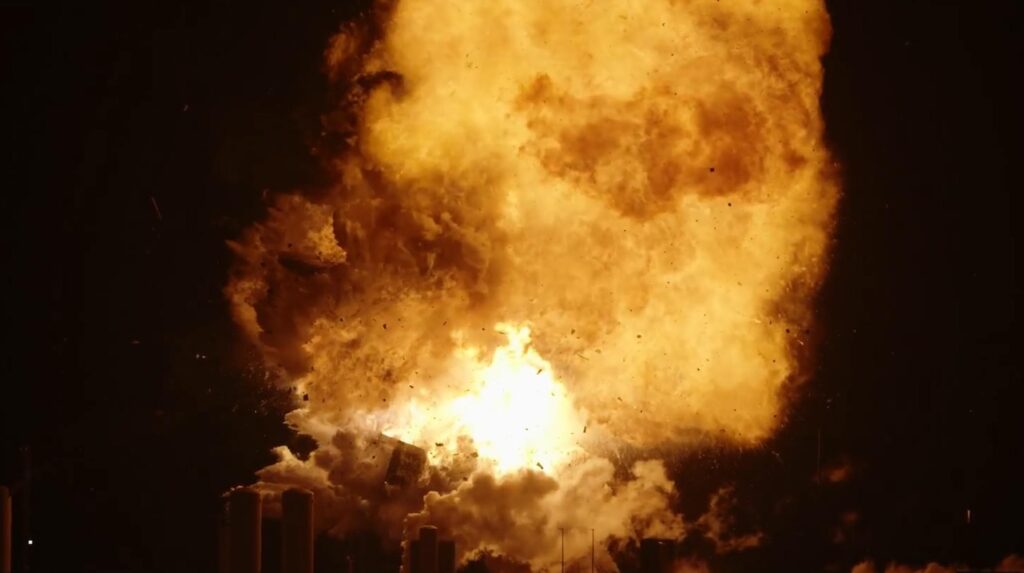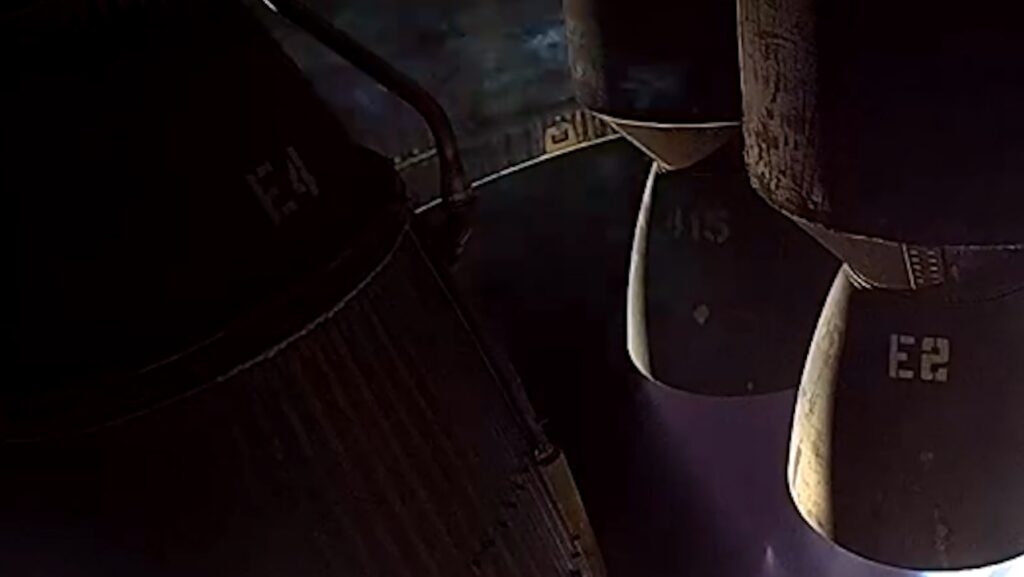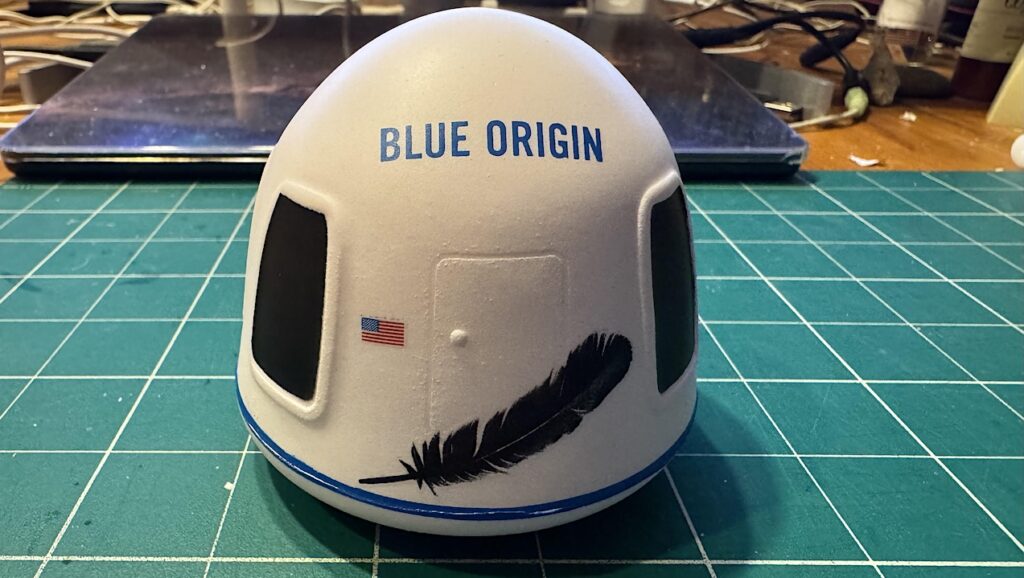ULA VP Quits Over Controversial Remarks

ULA Exec Resigns After Controversial Statements on McCain, Defense News
“The Arizona Republican opened a Thursday SASC appearance by Defense Secretary Ash Carter and Joint Chiefs chairman Gen. Joseph Dunford by calling on the Pentagon to investigate Tobey’s “disturbing statements.” The request is the latest salvo in McCain’s political battle to wean the US off of the Russian rocket engines supplied by ULA, a joint venture of Boeing and Lockheed Martin. “These statements raised troubling questions about the nature of the relationship between the Department of Defense and ULA,” said McCain, R-Ariz.”
ULA exec resigns after saying firm shied away from price war with SpaceX, Reuters
“A senior United Launch Alliance executive resigned on Wednesday after saying the firm last year refused to bid on a launch service contract for the U.S. military’s next-generation GPS satellite because it was hoping to avoid a “cost shootout” with Elon Musk’s SpaceX.”
ULA intends to lower its costs, and raise its cool, to compete with SpaceX, Space News
“Don’t get me wrong: SpaceX has done some amazing stuff,” [ULA vice president of engineering. Brett] Tobey said. “The landing [in December] of that [Falcon 9] first stage at the Cape was nothing short of amazing. My wife and I were at Best Buy and watching it on my iPhone and I just got goose bumps. It was cool. “Watching them smash it into the barge was fun, too,” he said of previous, and a subsequent, SpaceX attempts at landing the first stage. “It’s getting tons of press. It’s extraordinarily, engineeringly cool but it’s dumb,” Tobey said. “I mean: Really? You carried 100,000 pounds of fuel after deployment of the SES satellite [SpaceX’s March launch of the commercial SES-9 telecommunications satellite, to geostationary-transfer orbit] just to try to land on the barge.”
 Keith’s 16 March note: Gee, this ULA guy is dense. How much did that extra propellant cost? Pennies. What will it eventually allow SpaceX to do? Bring back and reuse rocket hardware that costs millions to produce. That means that you can sell the use of the same rocket more than once. This common business approach seems to elude Mr. Tobey. Then again ULA has been paid to be inefficient for decades, so this sort of thinking must be somewhat alien to them. Then there’s way he refers to ULA’s business partners. It would seem that ULA does not agree with what its own vice president has been saying. Tick tock.
Keith’s 16 March note: Gee, this ULA guy is dense. How much did that extra propellant cost? Pennies. What will it eventually allow SpaceX to do? Bring back and reuse rocket hardware that costs millions to produce. That means that you can sell the use of the same rocket more than once. This common business approach seems to elude Mr. Tobey. Then again ULA has been paid to be inefficient for decades, so this sort of thinking must be somewhat alien to them. Then there’s way he refers to ULA’s business partners. It would seem that ULA does not agree with what its own vice president has been saying. Tick tock.
ULA executive compares two of the company’s business partners to ‘two brides’, The Verge
“Compare it to having two fiances, two possible brides,” Tobey said of ULA’s relationship with the two companies during a talk at the University of Colorado-Boulder. “Blue Origin is a super-rich girl, and then there is this poor girl over here, Aerojet Rocketdyne. But we have to continue to go to planned rehearsal dinners, buy cakes, and all the rest with both.”
|
|









As a government contractor understanding Washington lobbying is far more important than economics.
I wonder if their next claim is that they pollute less, and contribute less to global warming, because they don’t burn that extra fuel but instead just dispose of their entire stage in the ocean 🙂
If you want further proof that they do not understand business, consider this: instead of taking their existing 100% reliable Delta IV that was designed for low cost and already meets all Air Force and NASA requirements and spending some money to make it cheaper, they are going to build a brand new Vulcan rocket with a brand new engine from an unproven supplier that needs completely different fuel (and therefore needs major pad investments) and will take years to certify for NASA and USAF missions. Oh and they plan to recover their engines by parachute midway to landing! All of this will be done to be cheaper than the Falcon rockets that are already flying! The SpaceX team must be laughing their arses off!
Both EELVs were supposed to be “low cost”, but they weren’t. In fact, Delta IV *is* more expensive than Atlas V, and Vulcan will be much closer to Atlas V than Delta IV in its design. Really, ULA could have named their new launch vehicle Atlas VI, but they’re trying very hard to appear to be building something brand new, hence the name change (i.e. branding for sales and marketing).
Both EELV families were lower cost than the three families (Atlas II, Delta II and Titan IV that they replaced – a Titan IV alone used to cost over $600M in current dollars! And maintaining half a dozen launch pads and three production lines all raised costs as well. Yes, Falcon 9 IS cheaper but unlike ULA, it pursues commercial customers and, as a private company owned by a visionary billionaire, it may accept margins far lower than ULA’s publicly traded parents.
Atlas’ primary advantage is due to the RD-180; it is cheaper and higher performing than the Delta IV’s RS-68 engine which is why Atlas has more flexibility in payloads and why you can use a smaller Atlas combination for mid range payloads. Atlas also benefits from a higher launch rate for this same reason; that is also a major reason why it is cheaper. If you invested to reduce the Delta IV cost – perhaps by adding a regenerative nozzle to the RS-68 and giving it a greater trust and throttling range, and used Delta IV more often, its costs would drop substantially. Would Delta IV be cheaper than Falcon? It’s hard to know since we can’t tell yet how many re-uses they will get out of each booster but its likely that this approach to Delta IV would be far more competitive and be available more quickly than the stupid path they are now pursuing.
“Yes, Falcon 9 IS cheaper but unlike ULA, it pursues commercial customers “
Falcon 9 doesn’t pursue customers – SpaceX pursues commercial customers for Falcon 9 and for SpaceX’ services as a launch provider, just as Lockheed Martin’s launch services pursues commercial customers for Atlas V and ULA’s launch services. One gets more commercial customers than the other, and I suspect that has something to do with price.
Good point though its not clear that Atlas would be much more expensive than an Ariane 5 which competes well – LM just doesn’t seem very motivated to sell it commercially and the Atlas and Delta sales teams were folded into ULA.
So slightly less than a typical DIV launch?
I was referring to the price in 1998 dollars – that would likely be close to $1B today!
Make up your mind.
$1 billion per launch in current dollars for a Titan IV is high by a factor of two.
Wikipedia puts the cost in 2016 dollars at about $500 million per Titan IV launch (total cost of program divided by the number of launches).
Unfortunately, it is hard to pin down the exact cost of a Delta IV Heavy due to how ULA does its contracts and accounting (i.e. the money it gets from the US Government to maintain its launch infrastructure), but Wikipedia put the Delta IV Heavy cost for a NASA mission at $375 million. That’s not too far from Titan IV launch costs.
For comparison, SpaceX is planning on selling Falcon Heavy launches for $90 million.
Hard to rely on Wikipedia for something like Titan IV expenses; much of the cost was covered by NRO whose budgets are not public. It’s instructive to remember that Titan was notorious at the time for operational inefficiency; recall that in one instance, in the mid 1990’s, a vehicle was on the pad for 18 months and the head of USAF Space Command threatened to give it a building number if it didn’t launch before 24 months! Titan IV’s also had a nasty habit of blowing up – including the last one – so it wasn’t just something they overcame.
In fact, in 1999, the Air Force estimated launch failures had cost $3B in launch delays and damage to spacecraft. Titan IV was the reason why there was an EELV and while EELV has grown in cost, the initial program estimate in 2004 was that it was saving 25 – 30% compared to the prior architecture. Is SpaceX be cheaper, sure but the original point I was making was that the plan to build Vulcan was stupid and that improving Delta IV made motre sense – not whether Titan IV was cheaper than Delta IV Heavy.
That ITL assembly line, wow. Biggest assembly line ever made?
Delta is the most expensive current rocket per pound except Pegasus.
Tobey said “You carried 100,000 pounds of fuel after deployment of the SES satellite”
50 tons of fuel?
Sounds like a lot, but even if it is that much, kerosene and LOX are still relatively cheap, compared to the overall cost of a launch. Minimizing fuel used is silly when what you’re trying to do is minimize the overall launch costs.
It’s not. The F9 second stage carries less than 100 tonnes of propellant in total. The idea that it had nearly half left over, even after lofting a large GEO-sat on an energy-hungry high loft trajectory, is ridiculous. It would make F9 a 50 tonne to LEO launcher.
If it’s not a typo (too many zeros), Tobey is clearly an idiot. And judging by some of his other comments… Tobey is clearly an idiot.
THAT was my point.
That’s the second stage. I couldn’t find the fuel mass for the first stage (the one they try to recover), but you can make a ballpark estimate from the thrust, specific impulse and burn time. I get about 300 tonnes for the first stage, and, as a sanity check, the same method to gives about 100 for the second. 50 out of 300 still seams a bit much to be plausible.
But despite SpaceWorks’ study showing roughly 5% of propellant is needed in reserve for a barge landing and 10% for return to land, ULA’s video with an animated cut-away rocket clearly shows 50%, so Tobey was probably going with ULA’s data.
And really, even at 5%, his argument is sound isn’t it?
I mean… if it was economically feasible to carry the fuel needed to land airliners would do that instead of kicking passengers out on parachutes at their destination and crashing the plane, right?
One source lists total first stage propellant for F9FT at 409.5 metric tons, which would make 100,000lb about 10.5% of the total.
http://spaceflight101.com/s…
so lets say it was 100,000 lbs of fuel:
assuming: LOX/RP-1 ratio of 2, $1.82/gal for 1 gal of LOX, $30/gal of RP-1 (non-bulk prices I got from DLA), .91g/ml density RP1, 1.14g/ml density on the LOX
that makes the fuel cost, a whopping, $145,000
bulk prices goes to $31k…
Split the difference and call it $90,000 in propellant plus a few replacement items to recover a $10,000,000 first stage. This idea of landing a first stage is only a controversial argument to someone who knows nothing about economics or systems thinking.
People commonly seem to think rocket fuel is expensive. LOX is a really cheap material mined from air, RP-1 is basically jet fuel. It took an interview with Praxair and that same DLA chart to convince my sustainability professor that propellant is not a make-or-break cost for rockets.
Agreed. Reusing first stages will lead to more reliable first stages, since they have proven themselves after a few flights as well for allowing for inspections of flown hardware. SpaceX is already beating ULA on cost to the customer, so they have a lot more “wiggle room” to try something new. And as for schedule, refueling and reflying a soft landed stage has to be faster than all the work to mate a flown engine module up with a new set of tanks, parachutes, and etc.
Yeah, but the first time one of those reused SpaceX rockets blows up, they’ll never be able to convince future customers it wasn’t due to it not being brand new.
Your analogy has not held true for transport by horses, balloons, ships,
trains, automobiles, or aircraft. I have a hard time believing that in
the history of humans designing and building transportation systems we
just happen to hit the re-usability wall with rockets.
SpaceX already blew up an F9. It doesn’t seem to have dented their customer manifest. (The delay it caused probably did more damage.)
One of their early RTF customers was the notoriously twitchy Jason-3 team.
The industry seems to cope with accidents. The same will be true with reusables. Determine the cause, fix it, show the customer that you’ve fixed it, RTF with a lower value payload.
That’s been my sense as well. This is an industry that despite claims is very risk tolerant.
I’m not sure about that. There is an acceptance of the idea. When things go wrong, no one is surprised and customers don’t avoid a company because one of their launch vehicles or spacecraft failed. That sounds risk tolerant.
On the other hand, there is an expectation that, when something goes wrong, there will be an investigation to determine the cause of failure and the process (whatever it is) will be changed to prevent the same problem from ever happening again.
That isn’t a bad approach, but it does need some level of common sense mixed in. I can’t remember ever hearing someone say, “Avoiding a one in a thousand risk isn’t worth a 20% increase in cost.” I have trouble imagining that logic getting past a formal review. That’s a very risk-averse attitude.
I suppose I would say the industry is very understanding of unknown risks, and people/institutions don’t get blamed for unforeseen problems. But the industry is very unwilling to accept a known risk, even when that’s more efficient than going to extraordinary lengths to prevent it.
I would say that your view is more nuanced and correct.
This may all be true for cargo; but when you put people in the seats I think it will be a different thing. We will all have to see how many cycles of the shake, rattle & roll the Falcon will take before coming unglued. I think 90% of the major safety advances in aviation were paid for in blood. Hundred’s of airports around this country are named for pilots that were chewed up like sausages in the early days of aviation. We are a much less risk tolerant nation than we once were. If a puppy gets stuck in a drain pipe; its rescue gets 24/7 cable news coverage. What the ultimate cost of all that reusability and reliability will be…….who can say? As I have said before the graveyard of aviation is littered with the bones of “great & revolutionary ideas”.
How many people would board an aircraft if it was its very first flight (no flight tests whatsoever)? I’m pretty sure that satellite owners are smart enough to understand the “infant mortality” problem as well as the difficulty in making expendables more reliable when spent stages are either at the bottom of the ocean, or are smashed across the landscape.
sorry but the cost of fuel is irrelevent in the discussion (as I think others have shown).
The cost of landing is carrying that 100,000 lbs into orbit … you’ve surrendered 100,000 lbs of payload.
And then there’s the overhaul costs … you can’t just relaunch the rocket.
Another “small” cost is the cost to design a reusable rocket in the first place,but this is NRE. Probably the biggest part of this is the redesign after failed tests (not sure there were any, but I won’t expect that they could “hit it out of the park on the first pitch”.
So what. You’ve missed the point entirely in that it doesn’t matter what the extra mass is so long as you can deliver the payload to orbit.
SpaceX are banking that the costs saved through reuse will more than make up for the extra costs incurred in developing and flying a reusable first stage vehicle.
BTW they’re not stopping with just the first stage of F9. They’re currently investigating options for reusing the FH payload fairing. Their MCT is planned fully reusable.
So reusability is not simply a fad for them.
Cheers.
Actually, the fuel held in reserve for the *first* stage landing does not cause the loss of an equal amount of payload on the *second* stage. Only SpaceX knows exactly what the loss in payload is, but it’s not one to one.
And besides, if the customer’s payload is delivered into the proper orbit, it does not matter if fuel is “wasted” to land the first stage. Is fuel used by a passenger airliner to descend and land on a runway “wasted”? I think not. The primary concern is getting the stage or aircraft back intact. If this means burning some kerosene, so be it.
The first stage, and however much fuel it carries for landing, never gets close to orbit. It would be nice to know what the hit to payload in orbit really is. But it’s going to be much less that of the extra fuel in the first stage.
This study, based on the Falcon 9 v1.1 concluded that the payload hit for a downrange landing would be 20%, and for return to pad it would be 40% – requiring 5.5% and 10.5% of the propellant to be reserved for landing respectively.
http://www.sei.aero/eng/pap…
There are really two ways to look at that:
ULA’s glass-half empty view – sacrificing 40% of payload capacity means the costs per pound to orbit are higher what they could be without reuse.
SpaceX glass half-full view – Falcon 9 can cary the full payload it is designed to carry to orbit, so nothing is being sacrificed. If the first stage can be re-used with inspection and minimal refurbishment (engines are designed for 40 cycles before they need a rebuild) several times, the cost per launch can come down by roughly 1/3.
Lets see how the same logic would apply to a commuter van service that needs to move 6 people from point A to point B every day, and the distance of the trip consumes one tank of gas.
Glass half-empty view: Buy a 6 passenger van, move the people from A to B. Buy a new van the next day and repeat – or spend a little more money on 8 passenger vans, and hope 2 extra passengers show up each day for the same process.
Glass half-full view: Spend a little more money on an 8 passenger van, rip out two seats and put in an extra fuel tank instead of trying to find two more passengers. Deliver the passengers, drive it back to the pick up point and take more. With the costs consisting mostly of fuel and van maintenance rather than daily purchases of new vans, attract a larger customer base and drive a fleet of vans. If there is the occasional demand for 8 passengers in one trip, pull the extra tank out, put a couple of seats in, and charge the higher price for that trip that requires a van to be replaced. Ideally do this with a van that’s been used a lot and near the end of its service life.
Can those numbers possibly be true? 20/40% payload hit?
Perhaps this is analogous to modern computers. The one on my desktop is faster than I use almost all of the time and the one on my wife’s desk- 6 years old- is never taxed fully.
Perhaps rockets have gotten similarly “hot”?
Couldn’t you save a lot of that fuel if you landed like a plane, instead of a rocket?… You know, pop out some wings, and convert to a plane/glider for a landing on a landing strip… You figure SpaceX probably thought of that and nixed it – but it kinda makes sense.
No, wings & runways do not make sense in this case… Just increasing the amount of fuel in Falcon 9, so they have some extra to recover the stage (with propulsive landing) is what makes sense (to SpaceX) and I agree with them.
You have the dead-mass of all the aerodynamic surfaces and landing gear to carry through launch.
Plus the alignment of forces acting during horizontal landing are completely different than those during vertical launch, so the stage would need to be reinforced in two different directions, adding more mass. (For example, where your wings attach can’t cause the tank to “fold”, so you need extra reinforcing. The landing gear are transmitting the touch-down force through a small contact area, like shoving needles into a balloon, so you need extra frames around the tanks to transmit the forces over a wider area. Etc etc.)
There have been proposals for horizontal-landing flyback boosters. (The Russian Baikal.) There it makes more sense because side-mount boosters are less mass sensitive and usually more compact than the main stages (shorter narrower cylinders give you more engineering margin for strength.)
SpaceX’s reasoning is that you already have designed the stage to survive vertical acceleration, you are already carrying the engines. Landing legs are lower mass than landing gear. Use what you have, rather than add a bunch of extra stuff.
Fuel and oxidizer are a very tiny part of launch costs (less than 1%). This is not a good quantity to attempt to minimize in order to reduce launch costs.
Sounds like this Tobey guy just ruined his cushy high paying job..he simply fired himself.
Is the comparison accurate? Aside from the insanity of embarrassing a very media-savvy boss, just how accurate is the comparison?
Big business has big headaches for sure. Add to that quite a bit of risk and unknowns and the boys running rocket companies have their hands full.
If ULA wants to keep buying Russian RD-180s, they might consider moving their Birmingham, AL plant to Phoenix, AZ. Then Senator McCain might be able to forget the Russian SA-2 that shot him down, but I doubt it.
As long as Sen. Shelby is around. That will be a non-starter. Especially after ULA consolidated in AL from CA, CO & FL over the past decade.
Are they actually being paid TO “realize”? Or just the opposite?